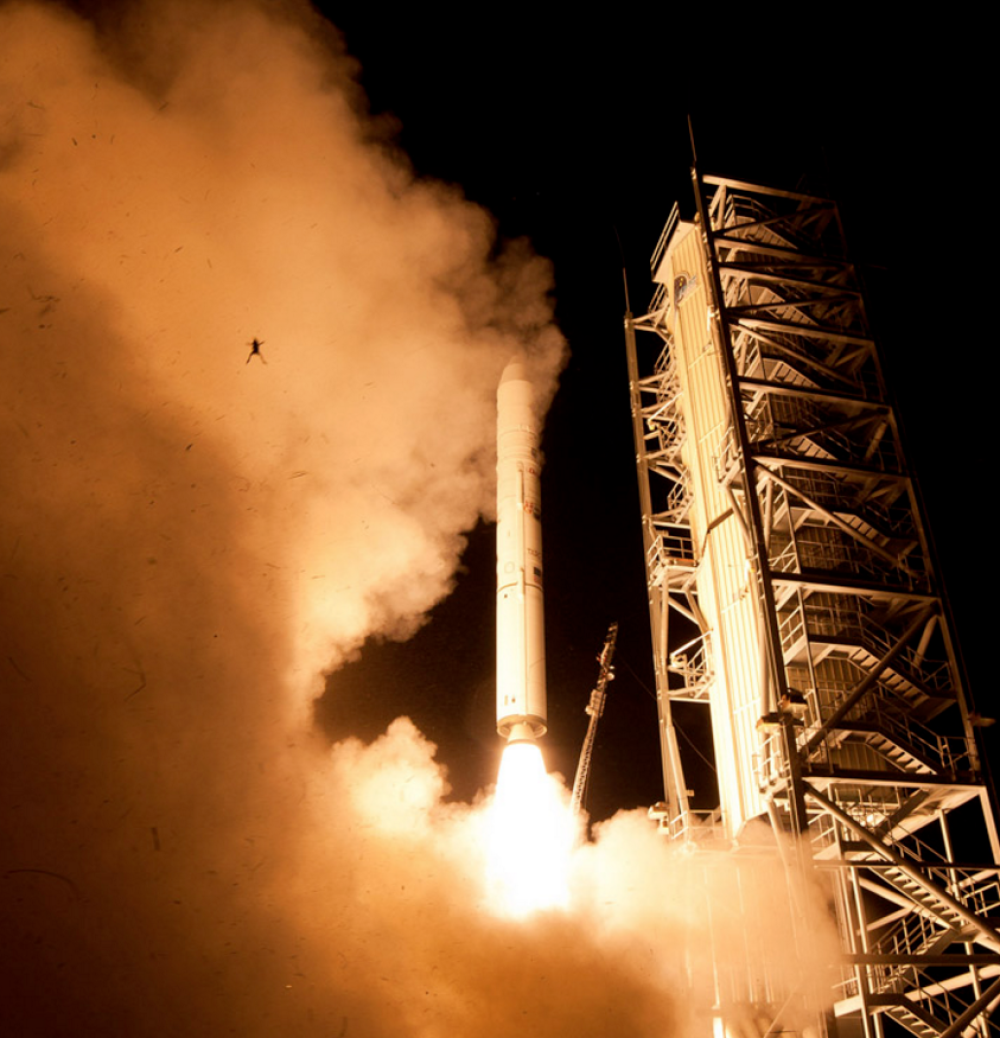Some images stay with you forever. For one person, it might be the first time they laid eyes on their child. Another, their spouse waiting at the other end of the aisle. For this writer, it’s that time a frog got launched into the stratosphere by a rocket launch.
I don’t mean that literally, of course. There’s no knowing how far that unfortunate frog soared before coming to a – what do they call it? – off-nominal landing. In a release about the unfrogettable photo, NASA themselves said, “The photo team confirmed the frog is real and was captured in a single frame by one of the remote cameras used to photograph the launch. The condition of the frog, however, is uncertain.”
The image was captured by a still camera that’s activated by sound, so safe to say, a rocket launch was worthy of a snap. The spacecraft that was taking off that fateful day on September 7, 2013 (unlucky for some) was NASA’s LADEE spacecraft. It took off from Pad 0B at Virginia’s Flight Facility known as, ahem, Wallops. Some stories really write themselves.
The photo stamp puts it at 03:27 AM. One heck of a wakeup call for Virginia’s local wildlife, but an otherwise good start for the LADEE launch that flew away with a photobomb to remember. Let’s take another look at it, full size this time.

Incredible scenes.
Image credit: NASA/Wallops Flight Facility/Chris Perry
When it was all done walloping amphibians, the Lunar Atmosphere and Dust Environment Explorer (LADEE) spacecraft went on its merry way to orbit and impact the Moon. Fortunately, it was a robotic mission, or else the frog might not have been the only one with a sore head. Its goal was to gather information about the lunar atmosphere, as well as getting an idea of the conditions near the surface, and what influence lunar dust might have on the environment.
Wallops has been hosting launches on Virginia’s eastern shore since 1945, making it the oldest continuous rocket launch site in the United States. You might think all the noise and fuss would be enough to send the frogs packing, but wild animals are living it up in rocket launch sites across the globe.
Space flight undoubtedly has its part to play in global emissions, but when it comes to protected areas, it can be a good thing. Spaceports require vast areas to make sure rocket launches are far enough away from people to operate safely. Those large spaces are not barren, though, quite the opposite. They are full of living things, creating areas where many species are protected, even though they spend their days next to some of the most advanced vehicles ever built. Looking around at different sites, this partnership is unusual but mutually beneficial.
Take, for example, NASA’s Kennedy Space Center (KSC) in Florida, which shares a border with the Merritt Island National Wildlife Refuge. It is home to over 1,000 species of plants, 117 species of fish, 68 amphibian and reptile species, 330 birds, and 31 different mammal species. That’s a lot of life.
It’s not without its risks, but as they say, if you’re going to go out with a bang, might as well make one of the world’s greatest photobombs in the process.
Love a novelty space story? May I invite you to the Great Tomato Space Scandal of ’23?
Source Link: What You Really Need To Know About The World’s Unluckiest Frog